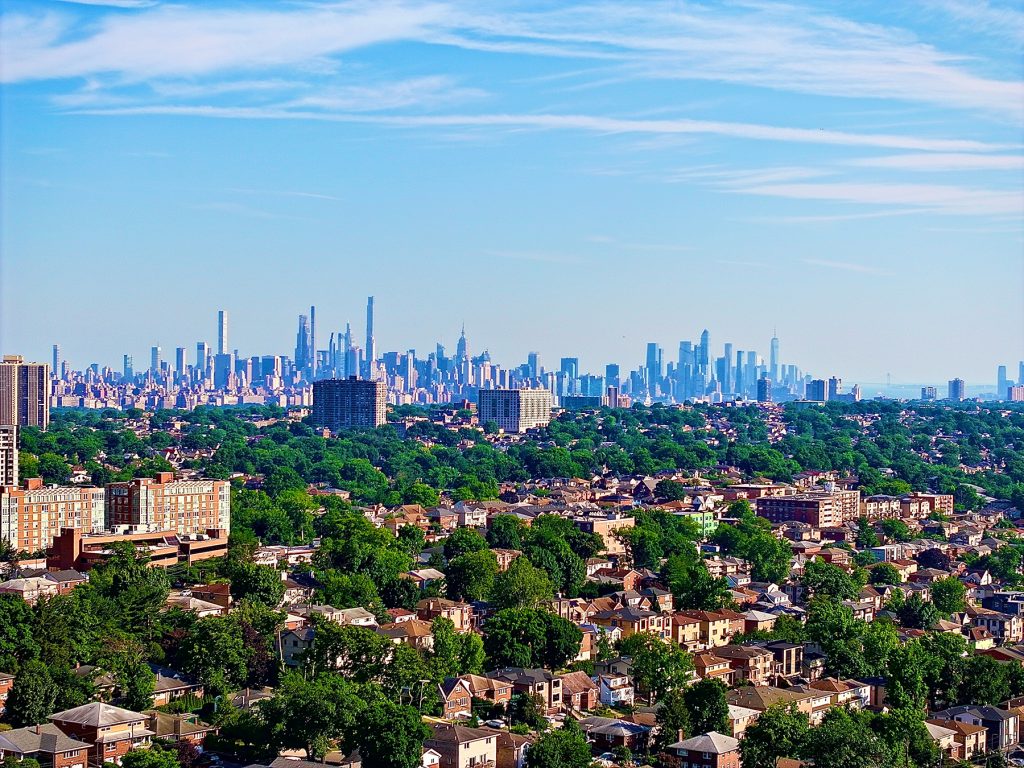
The sharp increase in professionals who have to travel long distances to reach their offices has a direct impact on emissions and on the air quality in cities and on climate change.
Globally, the amount of people commuting for 90 to 120 minutes a day at least once a week far exceeds 3% according to Euromonitor. The figure, which seems tiny, hides two realities: that we are talking about tens of millions of people around the world and that in just four years that huge amount has shot up by 65%.
It might seem like it is a phenomenon exclusive to developing countries with problems regarding infrastructure, chaotic cities, stratospheric population growth and hellish traffic. This would bring to mind complicated cities such as Sao Paulo and Bogotá, where studies have concluded that the hours spent on the road are linked to the development of mental illnesses like depression. The reality, however, is very different in this case. According to an analysis byStanford University on the ten largest cities in the United States, the number of people who travel at least 120 kilometers to get to their place of work has ‘shot up’ by just over 30% since 2019. Between the commute home and back, there are already millions of ‘super-commuters’ who spend more than four hours on average in transit and, very especially, on the road.

According to Stanford experts, Washington DC recorded the largest increase in super-commuters with a spectacular growth of 100% and New York ranked in second place with a jump of almost 90%. The increase was much smaller in cities like Phoenix (57%), Dallas (29%), Philadelphia (28%) and Los Angeles (20%). Finally, at the other end of the table, Chicago was the only megacity where there are now fewer super-commuters.
It is difficult to blame poor infrastructure or a population explosion in the large metropolises of a developed country that is also the world leader in technological innovation. In terms of traffic density, traffic jams do not explain the increase in commute distances. Taking longer is not the same as being further away… So what happened then? Clues lie behind the strange results of the two most extreme cases of Stanford’s analysis: Chicago and Washington DC.
Thus, in 2023, according to INRIX data, Chicago was the fifth most congested city in the world and its numbers worsened substantially between 2019 and 2023 compared to those of New York and Los Angeles. That is, its traffic worsened and, at the same time, the percentage of super-commuters decreased. On the other hand, Washington DC, which is one of the cities with the most super-commuters, is, according to INRIX, one of the American megacities which has most reduced the number of hours that commuters spend on the road. That is, the American capital has significantly increased the percentage of those who travel at least 120 kilometers to go to work, and at the same time, it hasreduced the hours its residents spend on the road by 9%.

No mystery
The matter begins to clear up when we take into account that, according to theStanford experts, people are now moving faster. In other words,Washingtonians are willing to travel greater distances because they can do it in less time.The decrease in the total hours spent commuting to work may have more to do with increased traffic fluidity than with commute distances.
The pandemic, which made residential and landscaped areas outside the city more attractive, also tempted people to live further away from the offices that are typically set in city centers. In addition, selling a house in the center often leaves enough equity to buy another one, larger and with better services on the outskirts, and millions of families did this in 2021 and 2022.
The rise of teleworking could also have lengthened the distances between the home and the office. More than 20% of Americans work remotely, a figure that is probably higher in the top ten cities in the country, and most have hybrid contracts. That is, some days they do not need to be physically present at the office and that usually means that they work from home. So, they can live further away and have a longer commute, as long as it is less frequent.
In theory, if teleworking has reduced the number of trips and has improved the fluidity of traffic, that could make living far from the city much more sustainable. And it is even more striking if we take into account that passenger transport is one of the main sources of global CO2 emissions and that travel in private cars is one of its main ingredients.

What sustainability depends on
According to a recent study on urban transport in Paris, CO2 emissions increase when we use our cars more often, we travel longer distances with them or we drive a highly polluting vehicle. And those, precisely, are the requirements that super-commuters have to meet so that their lifestyle is not sustainable.
However, if super-commuters embrace hybrid workdays, they should reduce the use of vehicles and improve the fluidity of traffic. According to some estimates, the constant stops and accelerations of a traffic jam at 45 km/h lead to emissions increasing by around 40%.
On the other hand, super-commuters cover fewer kilometers per week than workers who have to travel to their jobs every day. One or two remote days a week can be an incentive to live further away… but not too far away.
In any case, even if the distances traveled were the same or greater, it should be noted that super-commuters are usually professionals with high income and resources to buy an electric car. In Europe and the United States, the price differences between electric and combustion engines are in the double digits.

And these are all important details, because the rise of the super-commuters has coincided with the emergence of hybrid and zero-emission vehicles, which, between 2019 and 2023, went from less than ten million to more than forty million units sold worldwide according to the International Energy Agency.
This is the period in which super-commuters ‘shot up’ by 65% worldwide according to Euromonitor. And it was also then that the emissions from urban road transport fell by more than 4% in the European Union and when Europe’s two largest cities, London and Paris, expanded their population by more than 200,000 and 500,000 inhabitants respectively. Yet the time their residents spent on the road did not even increase by 4%.
In conclusion, it is clear that the rise of super-commuters in recent years is not incompatible with sustainability. In fact, living further away from work can contribute positively to the green transition if, as we have seen, it helps reduce the distances traveled by car at the end of the week, if those distances are traveled with more fluid traffic and if the vehicles driven by super-commuters are hybrid or electric.
Write: Gonzalo Toca